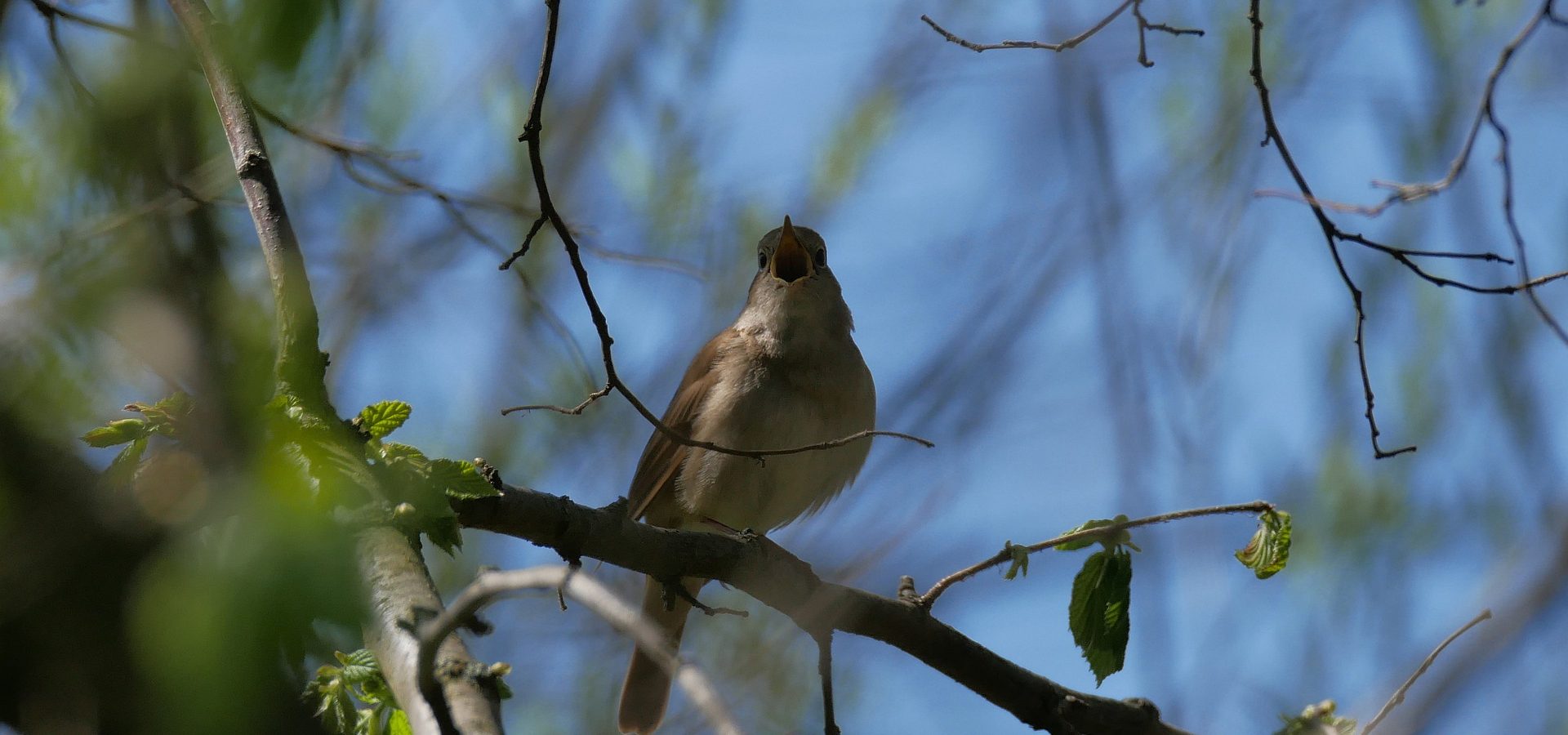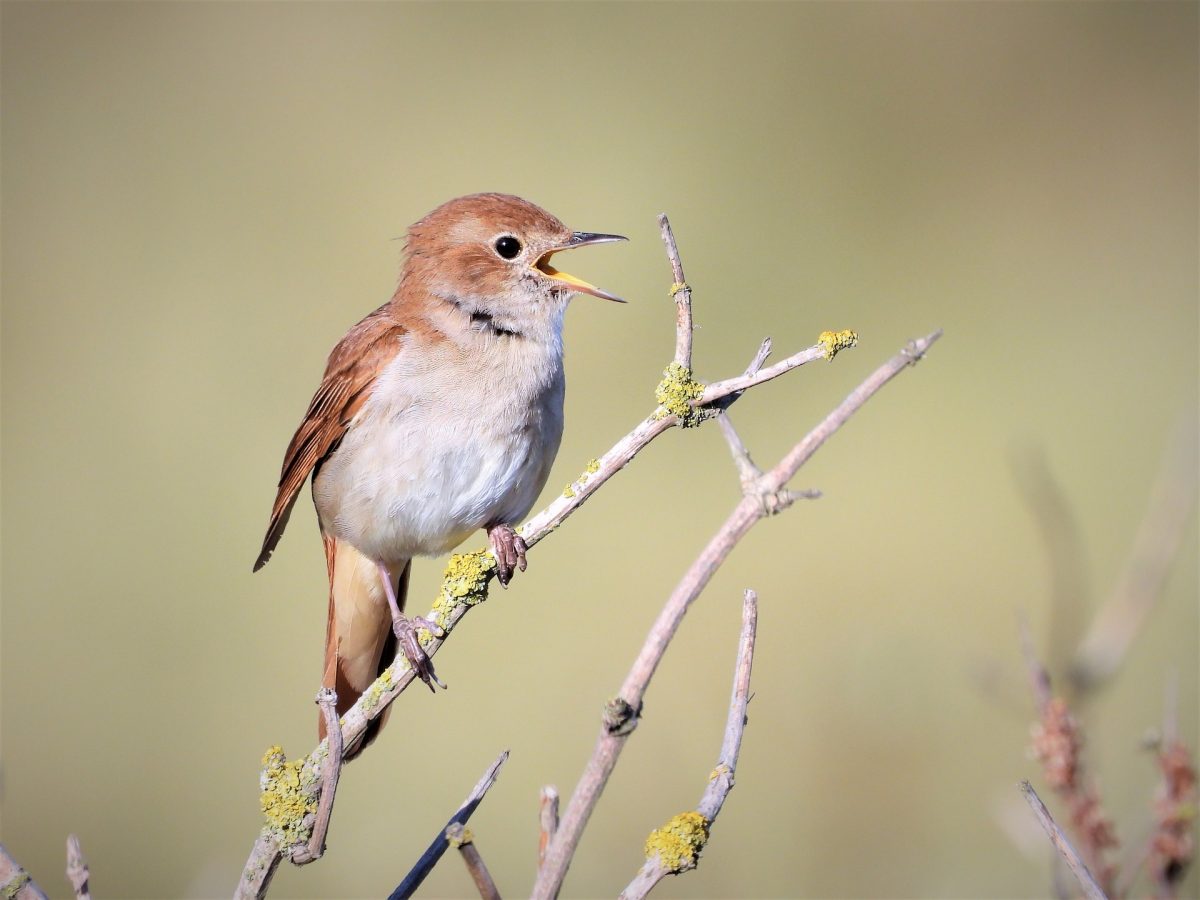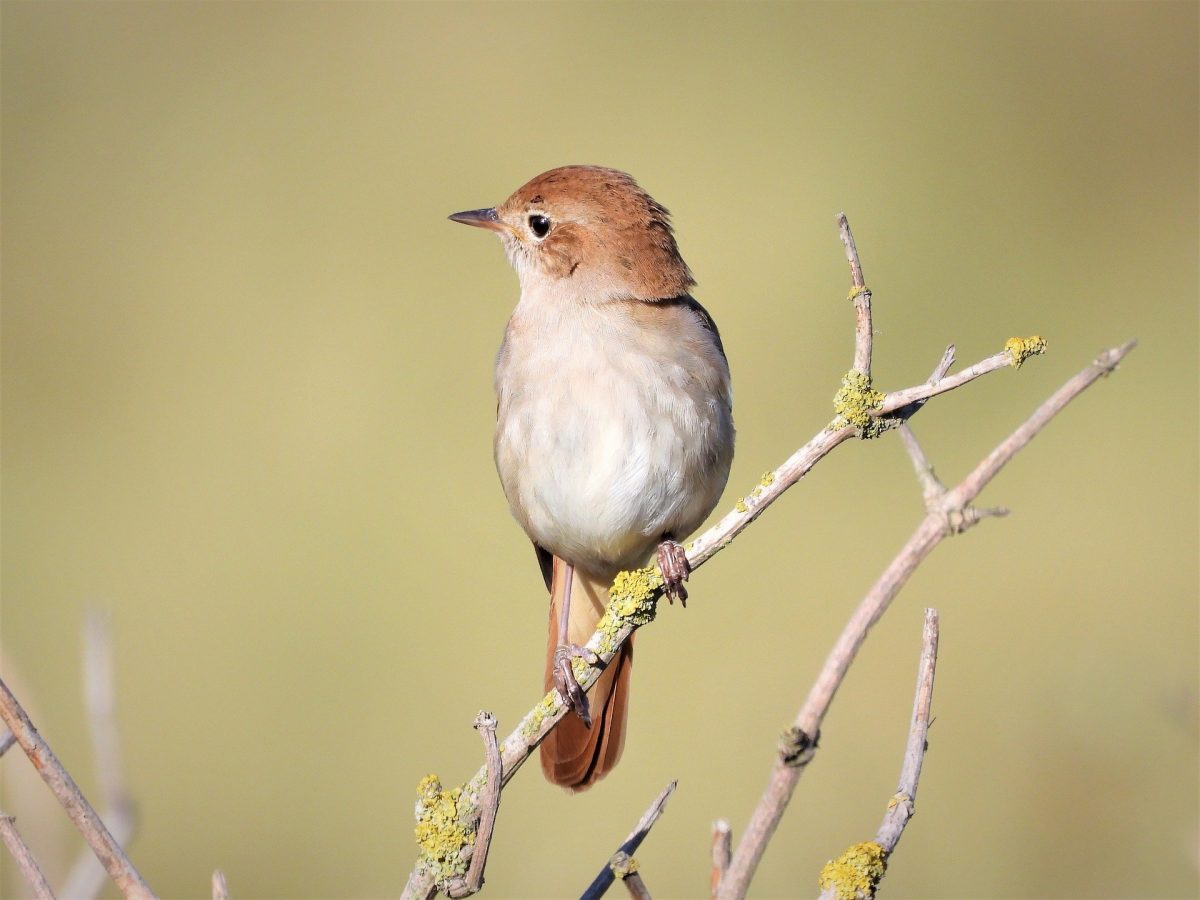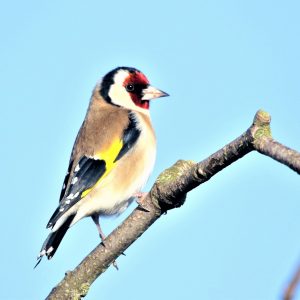« Rossignol de mes amours, vient chanter sous ma fenêtre … » (“My lovely nightingale comes and sings by my window”)
Lyrics and music by Raymond Vincy and Francis Lopez
The common nightingale is this bird waking you up and that you listen to at night for no reason. The male nightingale has the most contradictory song, dominating the world hustle and bustle. It feels like its notes are here to analyse each and every letter of the word “love”.
Its elegant shape brings freshness and life to the undergrowth.
It spreads its songs along, giving it to anyone listening, without revealing anything of its own mysteries.
It sings. Who knows, maybe for nature, for the trees, the plants, or the other birds? Perhaps for the whole of creation? For poets too?
What is so special to this “simple” bird, singing with so much energy even in the hottest hours of the day?
Thus, a musician of a few grams improvises melodies, plays with grains of dust, clears up any impurity. It is quite unbelievable!
We discovered this bird in a grove, and decided to adopt it forever, like a precious diamond.
At dusk, until “breathless”, it sings nervous and brilliant stanzas and dominates any other bird songs. Feverishly, it reveals to the world its ability to play music with nuances.
When it sings, its energy is so incredible that you would have to be deaf to ignore it.
Its bewitching songs are composed of a thousand notes, precious notes seized by the wind before reaching the sky.
It is said that the nightingale is so generous that what it gives is infinite and gracious.
A symbol among symbols, the nightingale waits patiently for the forest chatter to fade away before starting a symphony that can last up to 16 hours.
Where is this migratory bird coming from, with all its melodies and vocalizations?
After wintering in tropical Africa, it appears from the end of April until August. It settles in the forest on its previous year breeding site, after having flown at night for more than four thousand kilometres, crossing the Mediterranean Sea and the Straits of Gibraltar and Messina.
As soon as it arrives, it sings a crescendo of raucous and jerky accents, to quickly inform of its existence and nesting site.
This discreet-looking bird, with its dull plumage, compensates with its incredible singer abilities.
With determination, the female builds its nest near the ground within a few days.
It chooses the right leaves and twigs, perfectly lining the bottom of the nest with horsehair and fine dry grasses, while the male watches closely and fights against intruders.
Six olive-green eggs are laid and incubated over thirteen days. The young, fed by their parents, become independent after twenty days.
The time they spend learning to sing as a family determines the quality of their voice once they are adults.
When they are able to express themselves alone, they add their personal touches to their songs.
This pleasant bird of 22 grams and 17 centimetres, with a life expectancy of six years, is full of eloquence. Books describe the nightingale as a talented artist which arouses a lot of envy from the other birds.
Walkers, when you go hiking in the forest in spring, do not look for this shy sparrow. Stop, close your eyes, and listen to its emphases in the secret of your heart.
After this silent reading, try to imagine the nightingale, and be grateful for its joyful songs.
Photos: Heading © Thomas Griesohn-Pflieger and Featured image© Shifa Kaynat



